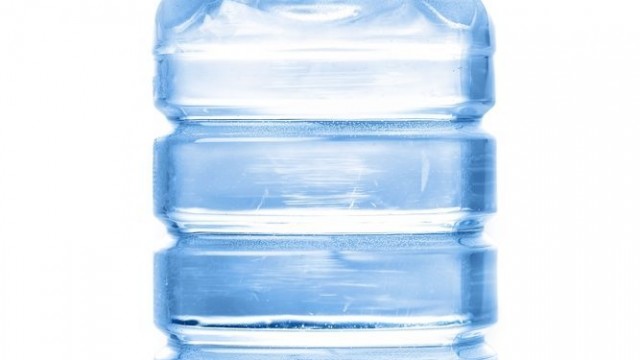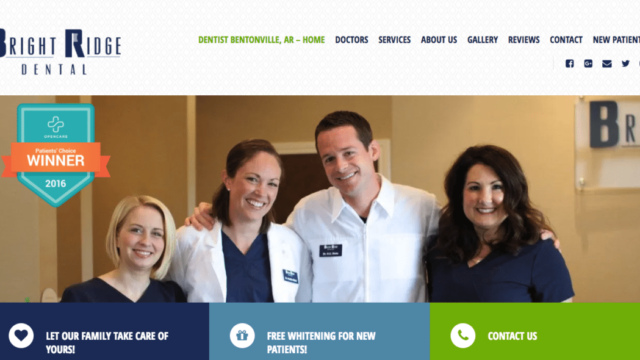Sometimes additional treatments are required to maintain optimum oral health. At Bright Ridge Dental, our array of hygiene services includes:
- Fluoride treatment: Professional-strength fluoride is applied to the surfaces of teeth, making them stronger and protecting them against tooth decay.
- Sealants: A sealant is a coating that protects a tooth from decay. It is a quick and painless procedure.
- Periodontal treatment: This treatment prevents the progression of periodontal disease and returns teeth and gums to a healthy state.
- Professional Teeth Cleanings: Having your teeth cleaned regularly helps prevent gingivitis, tooth decay, and loss of enamel from teeth.
- Tooth Decay Prevention: Successful preventive care requires education about diet and decay, good oral hygiene practices at home, and routine visits to the dentist.

Regardless of your needs, you can be assured that all of our hygiene services are performed by highly trained and experienced dental hygienists who are dedicated to supporting and preserving your continued oral health.

FAQ
Q: “How can I maintain good dental hygiene at home?”
A: You don’t have a skilled hygienist to help you maintain your oral health on a daily basis, but by brushing for two minutes at least twice a day and flossing daily, your at-home oral hygiene routine can keep your teeth and gums healthy between your routine dental visits.
Q: “What services are performed at a scheduled cleaning?”
A: Services your hygienist will perform during your cleaning include:
- A review of your dental and medical history
- An oral cancer screening
- An evaluation of your overall oral health
- X-rays to detect decay
- Removal of stains, plaque, and tartar
- A fluoride application
- Sealants
- Polishing of all teeth
- At-home oral health education and instruction
Q: “How often should I visit the office to maintain good dental hygiene?”
A: Dr. K.C. and Dr. Kait recommend that you schedule two routine visits each year in order to prevent decay and maintain optimal oral health.
For more information about the hygiene services we offer, please call our Bentonville dental office at (479) 715-4277 and make your appointment today!
Informational Video from Mouth Healthy/ADA on sealants:
Are you doing everything you can to make sure your children brush every day and eat healthy but they still get cavities? Fortunately, at Bright Ridge Dental— your local Bentonville family dentists — Drs. K.C. and Kaitlin Dietz can include sealants in your child’s dental plan: a noninvasive, preventive tooth-decay treatment that protects teeth and keeps them healthy while they mature and strengthen. Dental sealants are made from a resin material that is used to coat the chewing surfaces of the back teeth. It is painted on and seals the nooks and crannies in the teeth so that food and other cavity-causing materials are kept out.
At Bright Ridge Dental, the procedure for applying sealants is simple, painless, fast, and takes only one visit. First Dr. K.C. and Dr. Kaitin will remove debris from your teeth and thoroughly clean and dry them. Next the sealant material is painted on the chewing surface. It will naturally bond to the tooth on its own; however, a special light may be used to speed the process, helping the sealant to harden in just a couple of seconds.

FAQ
Q: “Are sealants only for children?”
A: Though dentists most often use dental sealants as a protective tooth-decay treatment for children, they are also perfect for adults who don’t have cavities or fillings in their molars. Talk to Dr. K.C. and Dr. Kait about protecting your teeth by adding them.
Q: “How long do dental sealants last?”
A: Dental sealants are incredibly strong and can withstand the force of chewing. They have been found to reduce the rate of decay by over 70%, and they can last over a decade.
Q: “Do I still need to brush and floss twice a day with sealants?”
A: Sealants only protect the chewing surfaces of the back teeth from cavities. Brushing and flossing regularly is the only way to make sure all of your teeth, as well as your overall oral health, stay in excellent condition.
Q: “Does your sealant material contain bisphenol-A (BPA)?”
A: No, we use a product called Ultraseal XT from Ultradent Products of Jordan, UT. Per the manufacturer’s website, “…Bisphenol-A (BPA) is a potentially harmful chemical used in some plastic materials including bottles, cans, home electronics, and even tooth sealants. However, Ultradent has always been aware of the risk associated with BPA and has never used it in UltraSeal XT plus or UltraSeal XT® hydro. We’ve even hired a third-party laboratory to test our sealants, and they confirmed they have a 0.00000% rate of BPA.” More info at: https://www.ultradent.com/en-us/Dental-Products-Supplies/Prevent-Hygiene/Pit-and-Fissure-Sealants/UltraSeal-XT-plus/Pages/default.aspx
The team at Bright Ridge Dental’s Bentonville dental office is happy to answer your questions about sealants and cavity prevention. Call (479) 715–4277 to find out more or to set up an appointment.
Preventing Tooth Decay
According to the Centers for Disease Control and Prevention, tooth decay is one of the most prevalent and preventable chronic disease in children and adults today. More than 90% of adults aged 20–64 have experienced tooth decay and tooth decay is one of the most common diseases of childhood—5 times as common as asthma, and 7 times as common as hay fever. Tooth decay is typically symptomless until there’s already a cavity or a tooth abscess (an infection at the root of a tooth or in the gums), both of which can lead to pain and tooth loss if left untreated. That’s why at Bright Ridge Dental we make prevention of tooth decay your dental plan’s primary focus.
What Is Tooth Decay?

Tooth decay occurs when the mouth’s naturally occurring, harmful bacteria combine with the sugars from food, producing acids. Over time, the acids eat away at your tooth’s enamel, causing tooth decay and eventually cavities or dental caries. Symptoms of tooth decay or a tooth abscess include:
- A toothache
- Sensitivity to sweet, cold or hot
- Swelling in the gums
- Bad breath/taste in the mouth
- Gray, brown, or black spots on your teeth
If you have a diet high in sugars and carbohydrates, drink from a water source that does not contain fluoride, or suffer from reduced salivary flow, you may be at risk for tooth decay. Young children are at higher risk for decay than are adults.
Preventing Tooth Decay
Successful preventive care requires good oral hygiene practices at home and routine visits to the dentist. At Bright Ridge Dental, our Bentonville dentists Drs. K.C. and Kaitlin Dietz understand that finding a dentist you have confidence in is key to maintaining a healthy smile, so we put extra effort and time into forming a long-term, trust-based relationship with all of our patients.
The following are steps you can take at home and during your routine dental visits to prevent tooth decay and improve your overall oral health:
- Eat healthy foods that are low in sugar or carbohydrates.
- Brush and floss a minimum of two times each day.
- Use a cavity-prevention mouthwash or rinse regularly.
- Schedule routine visits and cleanings.
- Consider having regular fluoride treatments, especially if you don’t get fluoride in your drinking water or have a higher risk for decay.
- Have dental sealants applied to your back teeth if they are free of fillings and decay; dental sealants are especially effective at protecting children’s teeth.

Treatment of Tooth Decay

If you have been diagnosed with tooth decay, the best course of treatment will depend on its severity. The following treatments are used once decay has eaten through tooth enamel:
- Filling: The decay is removed and Dr. K.C. and Dr. Kait fill the hole with one of several materials returning it to its natural form.
- Crown: If your tooth is severely damaged, a tooth-shaped cap is made to replace the damaged area.
- Root canal: If infection has reached the pulp of your tooth, Dr. K.C. and Dr. Kait will remove the infected area and replace damaged or missing parts of the affected tooth with a crown.
- Extraction: If the extent of the decay is severe, removal of the damaged tooth may be necessary.
FAQ

Q: “What is a tooth abscess?”
A: A tooth abscess is an infection that occurs at the root of a tooth or between the tooth and gum as a result of severe tooth-decay trauma. Signs that you may have a tooth abscess include fever, tooth pain/sensitivity, bad breath, swollen glands, swelling in the gums or upper or lower jaw, and open sores.
Q: “Is tooth pain a sign of tooth decay?”
A: Tooth pain can be a sign of tooth decay or other oral health issues. If you are experiencing tooth pain, you should contact our dentist and have it diagnosed immediately.
Q: “Is tooth extraction necessary if you have tooth decay?”
A: Tooth extraction may become necessary in severe cases of tooth decay. Extraction will only be considered after every possible avenue that preserves the tooth is exhausted.
Call (479) 715-4277 to find out more about tooth decay and prevention or to schedule your routine exam with our Bentonville dental office today.
X-Rays
What Our Office Uses – The Latest Technology
- Radiation from 4 digital radiographs (bitewings) with Nomad hand-held unit:0.006 mSv*
- Progeny Vantage Panorex (digital panoramic x-ray):~0.0018 mSv
* Adapted from: Phillips BJ, Ludlow JB, Platin E, Mauriello SM. Dental Staff Doses with Handheld Dental Intraoral X-Ray Units. 2012
VS.
Other Non-digital Offices – Old Technology
- Radiation from 4 film-based radiographs (4 BW’s) with wall-mount tube:0.038 mSv
- Panoramic radiograph (film):0.019 mSV
Our hand-held NOMAD’s high-frequency, 60kv DC x-ray generator provides constant radiation output. This improves image quality while reducing the dose to the patient relative to traditional half-wave (AC) generators. This amounts to 63% less radiation to the patient!
Comparison to medical imaging*:
Lower GI series 4.060 mSV
Upper GI series 2.440 mSV
Chest x-ray 0.080 mSV
*The information above is from the American Dental Association website
Cosmic radiation exposure:
Flying one round trip Seattle – Chicago 0.02-0.039 mSV
Max allowable exposure for US airline crews 11.0 mSv
Average radiation exposure for flight crews 2.19 mSv
Annual background radiation exposure:
Average radiation per person from outer-space in Denver, CO: 0.510 mSV
Average radiation from natural sources per person in the US:3.000 mSV




